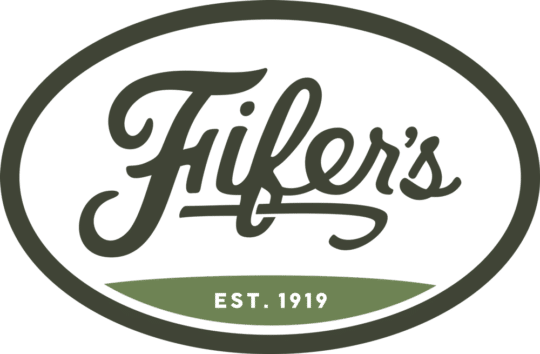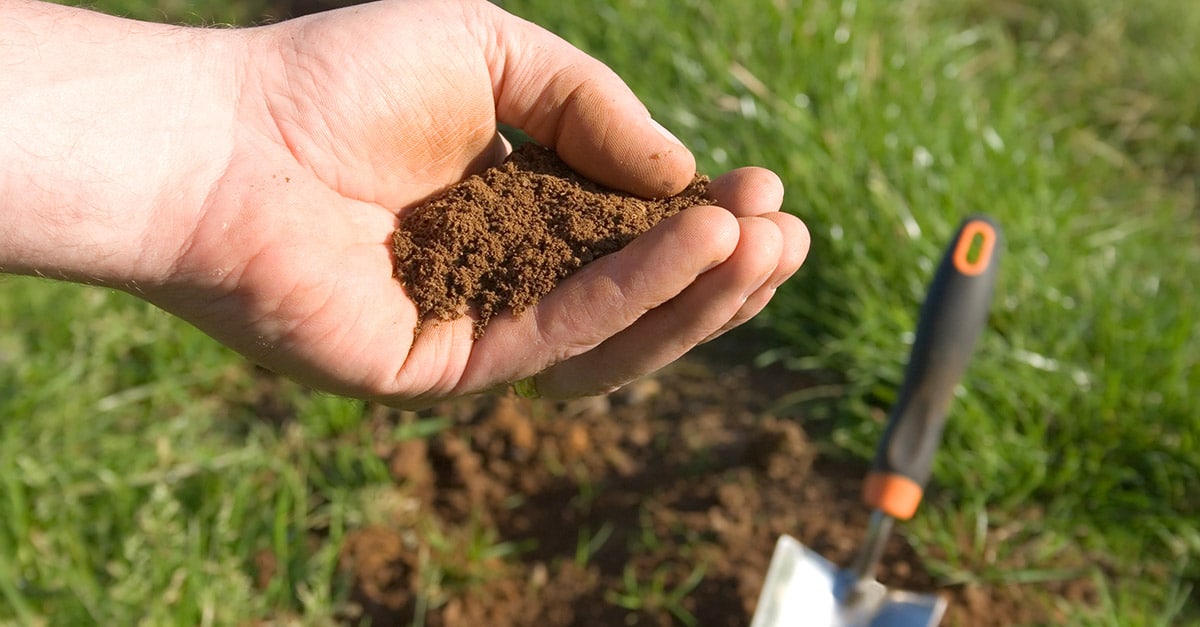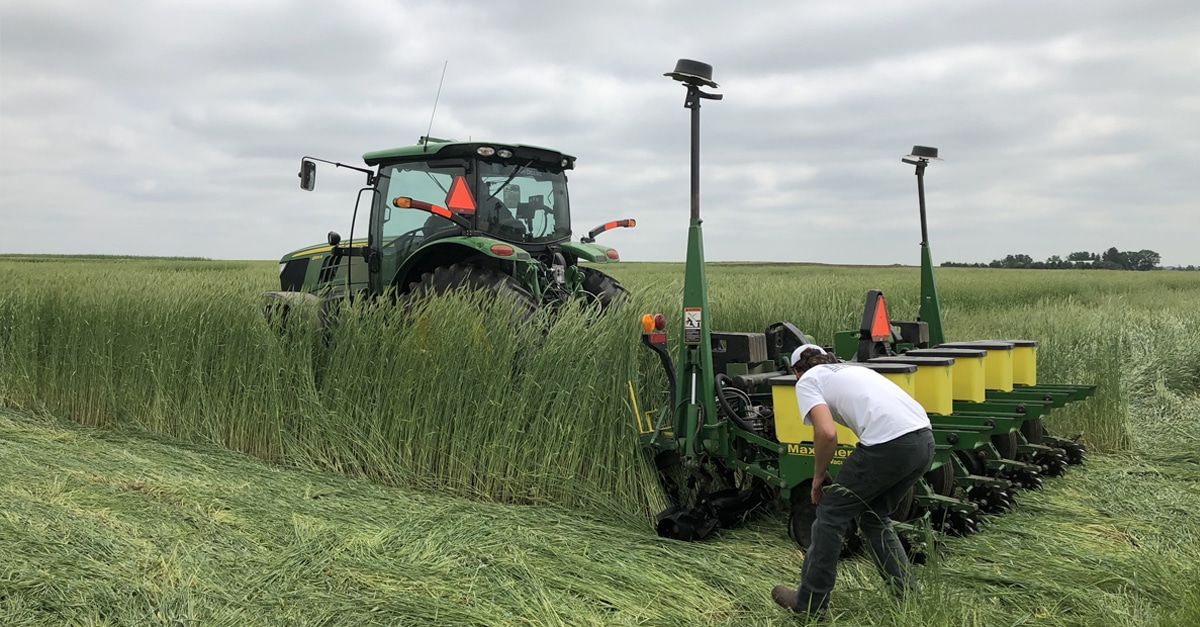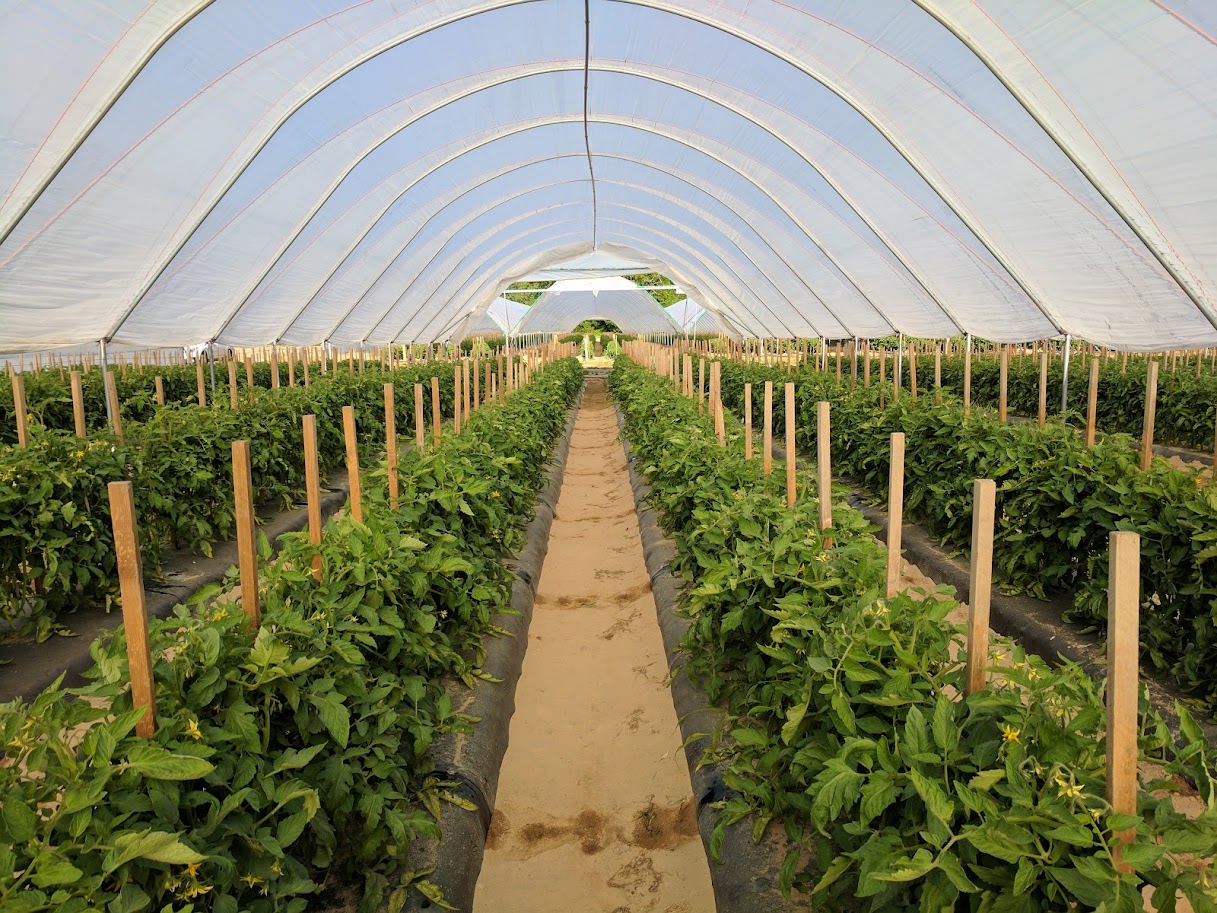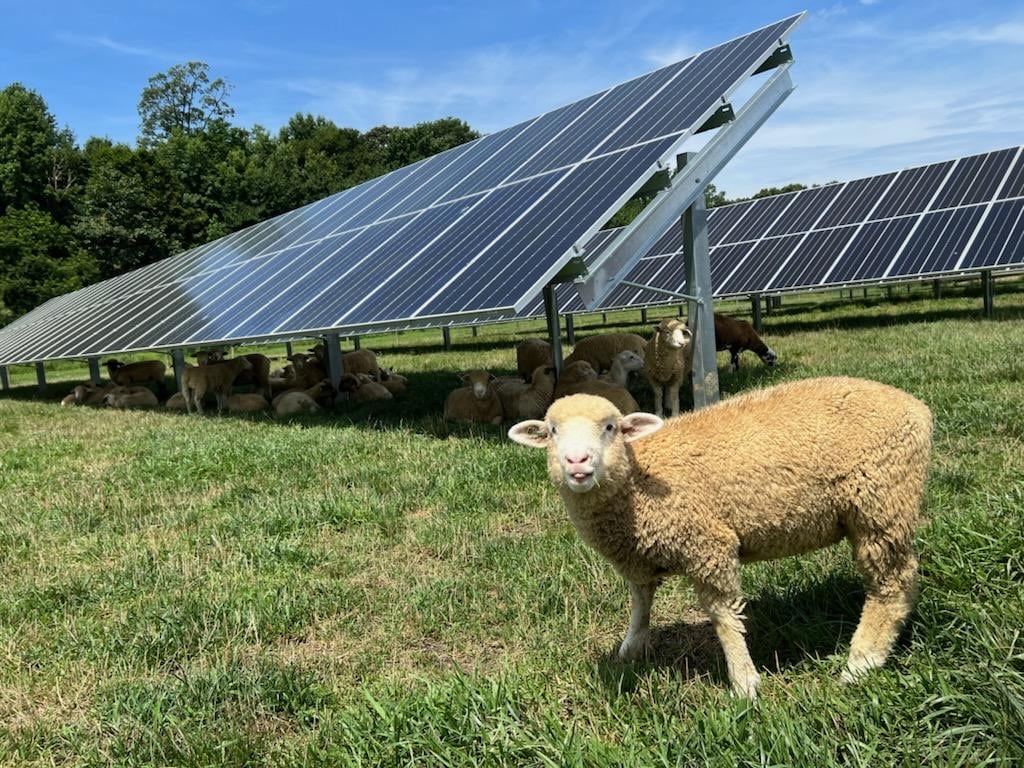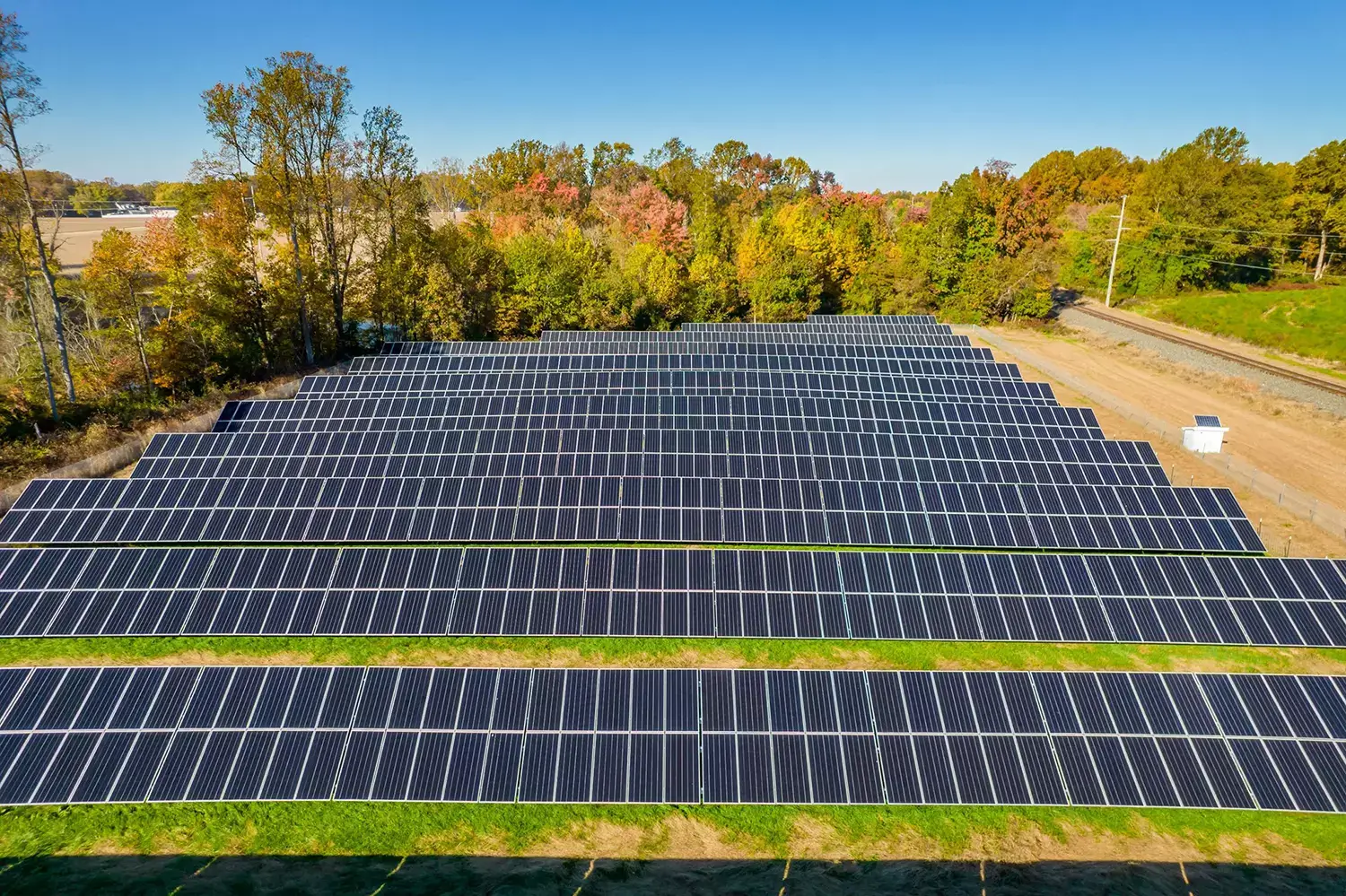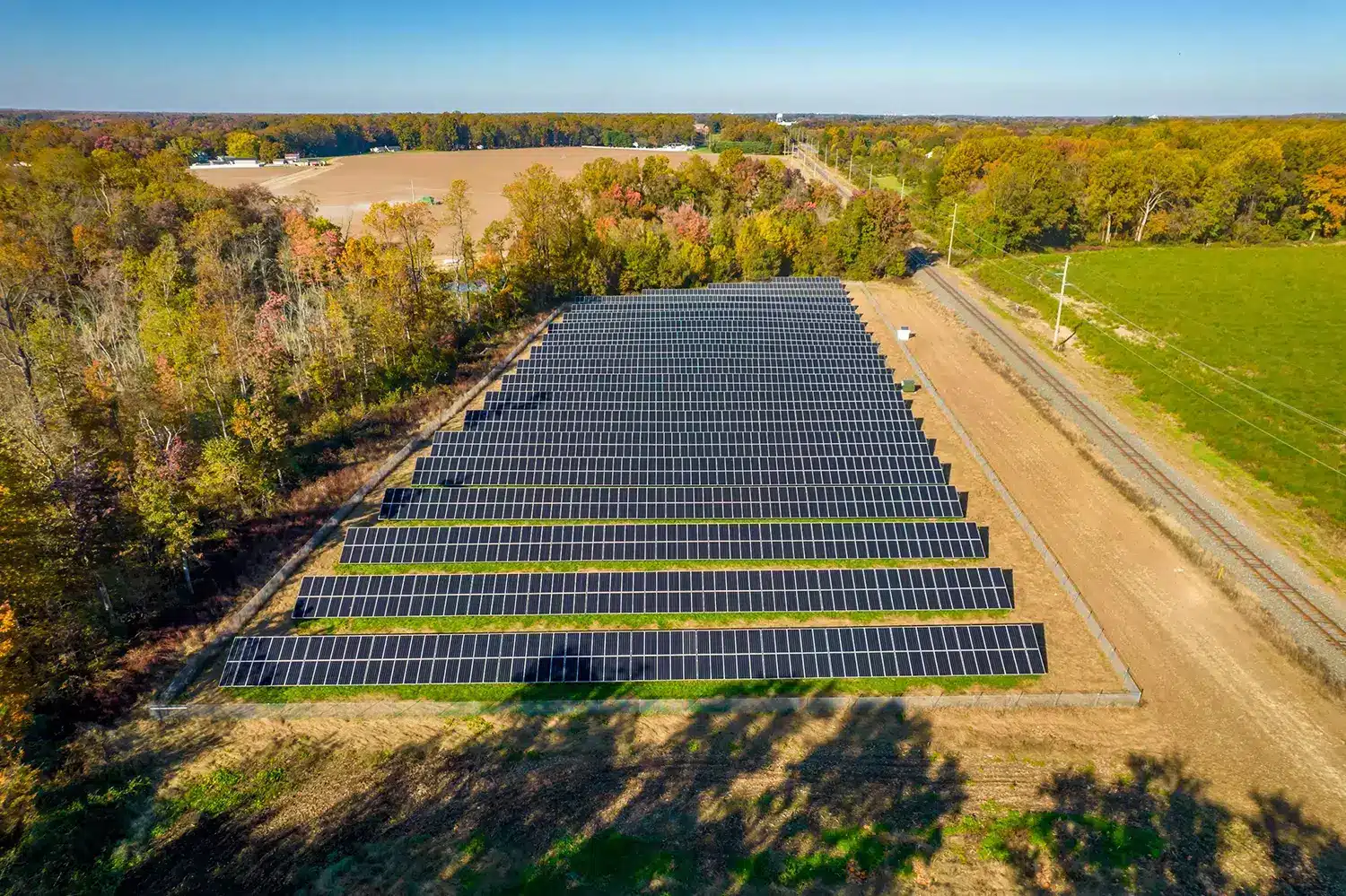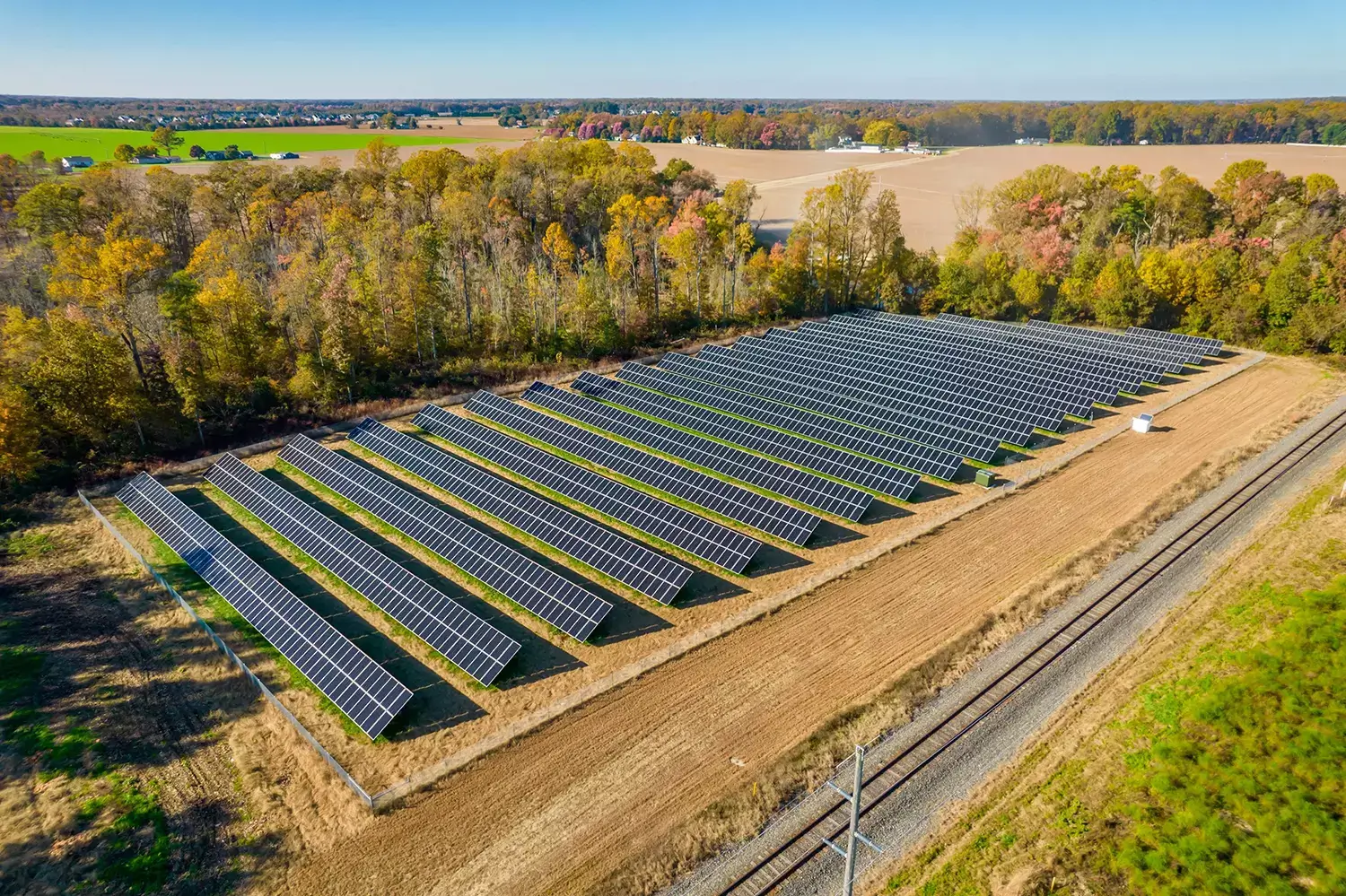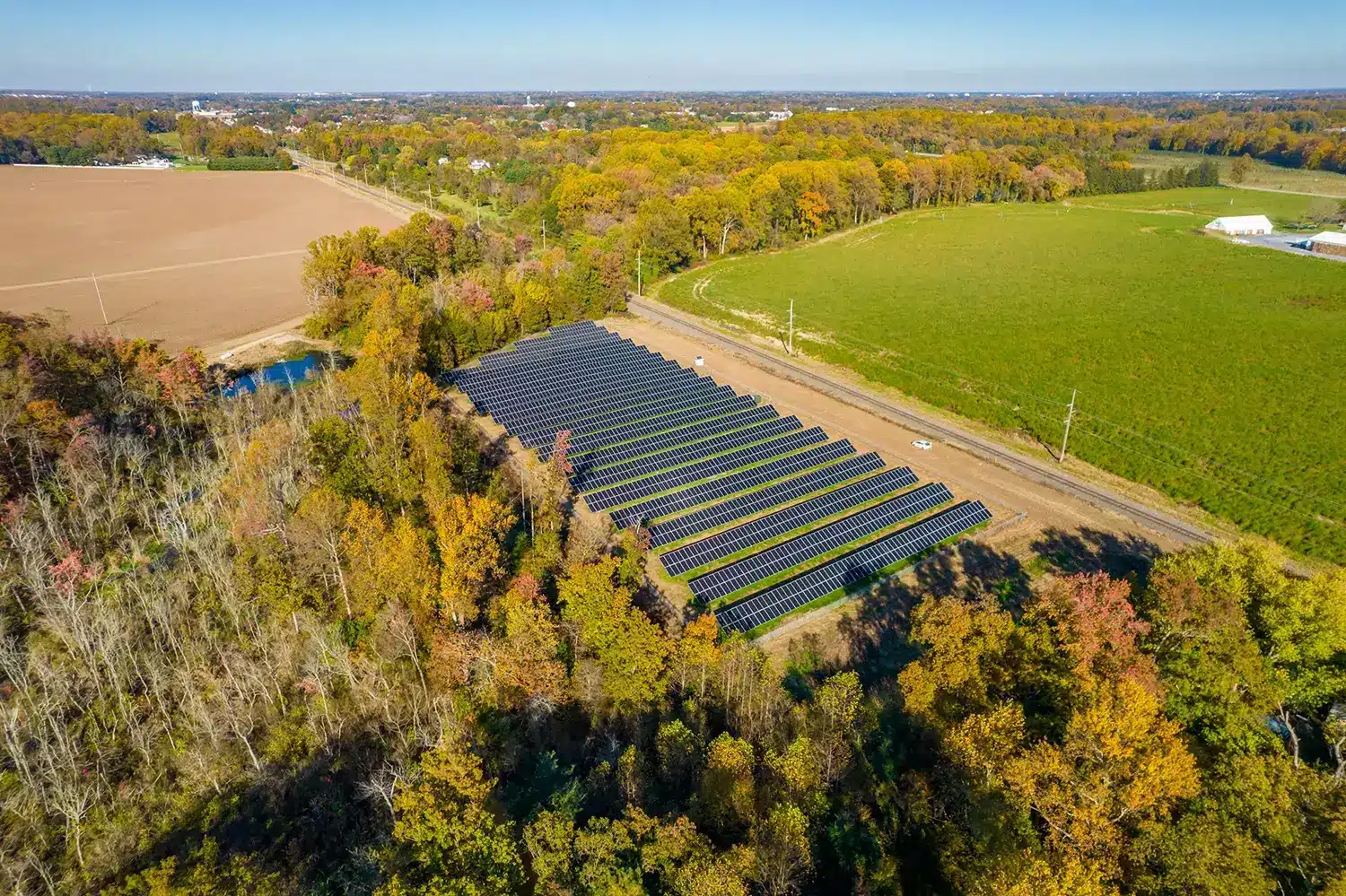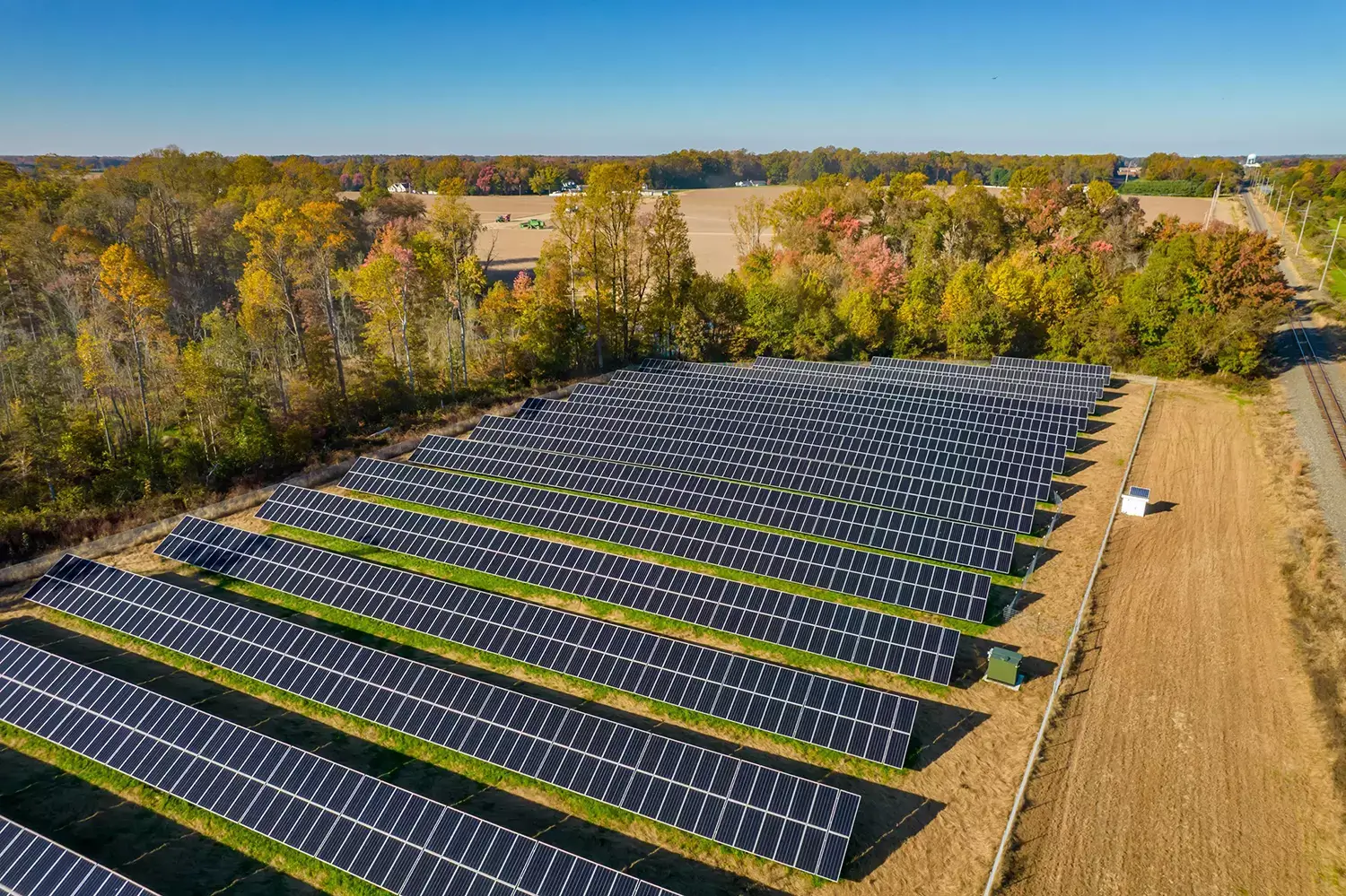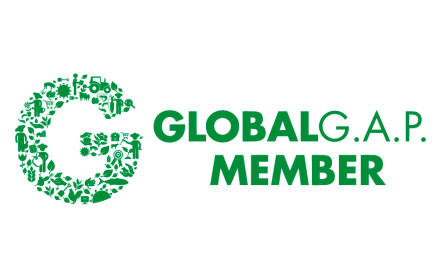Stewardship and Farming Practices
The Fifer family has a proud heritage of farming the fertile soils of Kent County Delaware for over 100 years. Our farm is proud to preserve many acres in farm production, orchards, woods and open space. These lands are home to many species of wildlife, native plants, forests and ponds.
Being good stewards of the land is essential to the long term success and mission of our family farm. Our livelihood depends on the land that we are blessed to farm and we treat it with the utmost respect and care. Our focus is safe, sustainable farming practices that preserve our environment, & reduce waste. We use regenerative agriculture methods to achieve quality, freshness and nutrition.
We are proud to be a G.A.P. certified farm.
G.A.P. (Good Agricultural Practices) is a not-for-profit organization and worldwide standard in safe, sustainable agricultural production.
The Global G.A.P. standard provides:
- Safe and sustainable food
- Safe production methods
- Responsible use of resources
- Welfare of workers and animals
- Protection of scarce resources
- Valuable reassurance for consumers
Our farm is honored to grow safe, nutritious fruits & veggies for our family and yours to enjoy. Below are some of our regenerative ag stewardship practices:
Our stewardship and farming practices:
The Fifer family has a proud heritage of farming the fertile soils Kent County, DE for almost 100 years. Our farm has preserved many acres in agricultural production and open space. These lands are home to many species of wildlife, native plants, forests, ponds and our fruit and vegetable crops.
Being good stewards of the land is essential to the long term success and mission of our family farm. Our livelihood depends on the land that we are blessed to farm and we treat it with the utmost respect and care.
Our focus is safe, sustainable farming practices that preserve our environment, reduce waste, and promote healthy growing systems. These actions ensure quality, freshness and nutrition. Growing a wide variety of crops enables our farm to practice a very strict crop rotation. This is critical to soil health and reduces pest pressures.
The fruits and vegetables grown at Fifer Orchards are Non-GMO
Fifer Orchards is proud to be a G.A.P. certified farm.
G.A.P. (Good Agricultural Practices) is a not-for-profit organization and worldwide standard in safe, sustainable agricultural production.
The Global G.A.P. standard provides:
- Safe and sustainable food
- Safe production methods
- Responsible use of resources
- Welfare of workers and animals
- Protection of scarce resources
- Valuable reassurance for consumers
Our farm is honored to grow nutritious fruits and veggies for our family and our community to enjoy. We invite you to share the harvest with us this season.
Crop Rotation
Growing the same crops on the same land for multiple years can lead to unhealthy soils that are nutrient starved and pest infested. We rotate our crops annually to assure that nutrient levels are being replenished naturally through rotation. This simple practice also decreases pest pressures naturally by confusing the pests and breaking their development cycles. Our farm policy is to go the extra mile and not plant the same crop for 3+ years on a given field.
Drip irrigation
Many of our orchards, strawberry fields, tomato fields and pumpkin patches utilize drip (or trickle) irrigation technology to reduce water waste. This method of water application also reduces disease and bacterial pressures that can build with wet leaves from standard irrigation methods. Drip irrigation targets water application directly to the root zone where it can be most efficiently used by the plants. There is no run-off or waste of water resources when using drip irrigation. Drip irrigation also requires lower pressure pumps. This reduces energy usage and fuel to power larger, higher pressure irrigation methods.
Integrated Pest Management (IPM)
Integrated Pest Management (IPM) is an effective and environmentally sensitive approach to pest management that relies on a combination of common sense practices. IPM programs use current, comprehensive information on the life cycles of pests and their interaction with the environment. This information, in combination with available pest control methods, is used to manage pest damage by the most economical means, and with the least possible hazard to people, property, and the environment.
The IPM strategy of farming considers life cycles of insects and diseases and the ability of the crops to tolerate some damage. There are many insects and mites that are beneficial because they naturally consume other pests that harm the crops. We take steps to not harm these beneficial insects and monitor their populations.
Integrated Pest Management is a way to control insect pests and diseases on crops by combining several complementary strategies such as sanitation, soil enrichment, variety selection, pest detection, and biological controls. Expensive chemical pesticides may be used, but only as a last resort. Many products are natural pesticides and certified for USDA organic farming.
IPM allows us to produce high quality fruits and vegetable and reduce pesticide use. Universities have estimated that IPM programs have reduced pesticide use by 25 to 85% on participating farms.
Sanitation: Start clean to grow clean. IPM promotes keeping growing areas free of weeds, which harbor pests and disease.
Soil Enrichment: Protect the soil. Cover crops provide erosion control and build soil structure. Organic matter is essential to provide nutrients to the land.
Variety Selection: Choosing the best and strongest plants. We select varieties based on a number of factors such as eating quality, vigor, yield potential and best suited for Delmarva’s micro climate. Stronger, more vigorous crops will withstand stresses better and have fewer pest infestations.
Pest Detection: Pest scouting is critical. Not only detection, but also understanding the life cycles of pests makes them easier to control. Local Universities provide us with constant monitoring of pest movements throughout the region.
Biological Controls: Using “good bugs” versus “bad bugs”. Understanding and protecting beneficial insects is part of the system.
Pesticides: Used only when absolutely necessary. Early detection and study of pest life cycles allows us to select reduced-risk materials that have a favorable environmental and safety profile.
Non-Chemical Controls: There are many ways to deter and confuse pests. Pheromones, plastic mulches, and row covers all allow us to reduce pest damage and control weed populations.
IPM is a proactive approach to growing crops. Support Local Agriculture: It offers multiple benefits to the consumer & the environment: fresh, nutritious crops, supports local business, preserves open space.
High Tunnels
High tunnels use radiant daytime heating to extend the season and give us early and late season fruit and vegetable production. We currently grow tomatoes and strawberries in our tunnels. The crops are planted in the ground as normal, but are covered by a tall plastic canopy and never rained on. This reduces disease pressure.
Pheromone disruption
We use pheromones to confuse damaging insects and reduce populations. This reduces spray applications significantly.
Reduced tillage
We plant some crops into untilled ground. This reduces fuel usage, reduces erosion, and helps the soil retain moisture.
Trapping/monitoring
We spend many hours trapping and scouting our farms and orchards to follow pest populations. This knowledge allows us to make informed decisions about specific insects that are of concern.
Soil Sampling
We have four staff members certified in nutrient management to make sure our fertilizer programs are most efficient. This reduces waste.
Cover Crops
We plant winter “cover crops” to protect from winter erosion and runoff. These crops include grains (wheat, barley, rye) and even tillage radishes. The roots of the grain crops help hold the soil in place during the winds, rains and snows of the winter season. The radishes grow quickly in the fall and help aerate the soil reducing compaction issues and making it easier for earthworms and other soil creatures to do their work. These crops also enrich the soil with organic matter when they are incorporated into the ground.
Energy reduction
-Low watt fluorescent lighting has been installed in our buildings. This reduces energy usage by 33% versus traditional lighting.
-Our farm equipment has been retrofitted with more fuel efficient engines that also reduce carbon emissions.
-New low pressure irrigation systems have been installed. These systems reduce energy needs and conserves water as well.
- Crop Rotation: Growing the same crops on the same land for multiple years can lead to unhealthy soils that are nutrient starved and pest infested. We rotate our crops annually to assure that nutrient levels are being replenished naturally through rotation. This important practice also decreases pest pressures naturally by confusing the pests and breaking their development cycles.
- Strip tillage : Strip tillage conserves more soil moisture compared to intensive tillage systems and help reduce carbon release into the atmosphere. Strip tillage also warms the soil faster in the spring and fosters aerobic soil conditions. How does it work? Step one is to grow our winter cover crop Step two is the strip tillage machine that will fluff up the soil only in the strips that we will be planting the crop into. This leaves most of the field untouched (no-tillage) to reduce erosion. Next we use a piece of equipment called a crimper roller to flatten down the cover crop. This will shade out any weed seeds from growing, retain soil moisture and add organic matter and nutrients. The planter uses GPS technology to then accurately deposit the seeds into the fluffed up strips of soil for the perfect growing environment. Our tractors are all equipped with ‘Auto Steer’ technology that has sub-inch accuracy. This detailed accuracy enables us to conserve resources and maximize efficiency on each acre. Auto Steer is a semi-autonomous technology that only requires the tractor operator to turn the tractor around at the end of the row. The tractor then takes over hands-free and steers itself for perfectly straight rows (that match up exactly with our strip tillage rows). Without this technology we would be unable to accomplish this level of precision.
- Cover Crops & Soil Enrichment: Cover crops provide erosion control and build soil structure. Plus, cover crops add organic matter which provides essential nutrients and tilth to our soils. These crops include grains (wheat, barley, rye) and even tillage radishes. The roots of the grain crops help hold the soil in place during the winds, rains and snows of the winter season. The radishes grow quickly in the fall and help aerate the soil reducing compaction issues and making it easier for earthworms and other soil creatures to do their work.
- Drip irrigation : Many of our orchards and fields utilize drip (or trickle) irrigation technology to reduce water consumption. This method of water application also reduces disease and bacterial pressures that can build with wet leaves from standard irrigation methods. Drip irrigation targets water application directly to the root zone where it can be most efficiently used by the plants. There is no run-off or waste of water resources when using drip irrigation. Drip irrigation also requires lower pressure pumps. These smaller pumps reduce fuel consumption.
- Integrated Pest Management (IPM) : Integrated Pest Management is an effective and environmentally sensitive approach to pest management that relies on a combination of common sense practices. IPM programs use current, comprehensive information on the life cycles of pests and their interaction with the environment. This information, in combination with available pest control methods, is used to manage pest damage by the most economical means, and with the least possible hazard to people, property, and the environment. The IPM strategy of farming considers life cycles of insects and diseases plus the ability of the crops to tolerate some damage. There are many insects and mites that are beneficial because they naturally consume other pests that harm the crops. We take steps to not harm these beneficial insects and monitor their populations. Integrated Pest Management is a way to control insect pests and diseases on crops by combining several complementary strategies such as sanitation, soil enrichment, variety selection, pest detection, and biological controls. Expensive pesticides may be used, but only as a last resort. Many products are natural pesticides and certified for USDA organic farming. IPM allows us to produce high quality fruits and vegetable and reduce pesticide use. Universities have estimated that IPM programs have reduced pesticide use by up to 85% on participating farms.
- Sanitation: Start clean to grow clean. IPM promotes keeping growing areas free of weeds, which harbor pests and disease.
- Variety Selection: Choosing the best and strongest plants. We select varieties based on a number of factors such as eating quality, vigor, yield potential and best suited for Delmarva’s micro climate. Stronger, more vigorous crops will withstand stresses better and have fewer pest infestations.
- Pest Detection: Pest scouting is critical. Not only detection, but also understanding the life cycles of pests makes them easier to control. Local Universities provide us with constant monitoring of pest movements throughout the region.
- Biological Controls: Using “good bugs” versus “bad bugs”. Understanding and protecting beneficial insects is part of the system.
- Non-GMO: All of the fruits & vegetables that we grow at Fifer's are from Non-GMO seed.
- Non-Chemical Controls: There are many ways to deter and confuse pests. Pheromones, plastic mulches, and row covers all allow us to reduce pest damage and control weed populations. IPM is a proactive approach to growing crops. It offers multiple benefits to the consumer & the environment.
- Pheromone disruption : We use pheromones to confuse damaging insects and reduce populations. This reduces applications significantly.
- Trapping/monitoring : We spend many hours trapping and scouting our farms and orchards to follow pest populations. This knowledge allows us to make informed decisions about specific insects that are of concern.
- Soil Sampling : We have four staff members certified in nutrient management to make sure our fertilizer programs are most efficient. This reduces waste.
- High Tunnels :High tunnels use radiant daytime heating to extend the season and give us early season fruit and vegetable production. The crops are planted in the ground as normal, but are covered by a tall plastic canopy and never rained on. This reduces disease pressure.
- Energy reduction : Our tractors & farm equipment has been retrofitted with more fuel efficient engines that also reduce carbon emissions. LED lighting has been installed in our buildings. This reduces energy usage by 40% versus traditional lighting.
Our farm is honored to grow safe, nutritious fruits & veggies for our family and yours to enjoy. Below are some of our stewardship practices:
Our stewardship and farming practices:
The Fifer family has a proud heritage of farming the fertile soils Kent County, DE for almost 100 years. Our farm has preserved many acres in agricultural production and open space. These lands are home to many species of wildlife, native plants, forests, ponds and our fruit and vegetable crops.
Being good stewards of the land is essential to the long term success and mission of our family farm. Our livelihood depends on the land that we are blessed to farm and we treat it with the utmost respect and care.
Our focus is safe, sustainable farming practices that preserve our environment, reduce waste, and promote healthy growing systems. These actions ensure quality, freshness and nutrition. Growing a wide variety of crops enables our farm to practice a very strict crop rotation. This is critical to soil health and reduces pest pressures.
The fruits and vegetables grown at Fifer Orchards are Non-GMO
Fifer Orchards is proud to be a G.A.P. certified farm.
G.A.P. (Good Agricultural Practices) is a not-for-profit organization and worldwide standard in safe, sustainable agricultural production.
The Global G.A.P. standard provides:
- Safe and sustainable food
- Safe production methods
- Responsible use of resources
- Welfare of workers and animals
- Protection of scarce resources
- Valuable reassurance for consumers
Our farm is honored to grow nutritious fruits and veggies for our family and our community to enjoy. We invite you to share the harvest with us this season.
Crop Rotation
Growing the same crops on the same land for multiple years can lead to unhealthy soils that are nutrient starved and pest infested. We rotate our crops annually to assure that nutrient levels are being replenished naturally through rotation. This simple practice also decreases pest pressures naturally by confusing the pests and breaking their development cycles. Our farm policy is to go the extra mile and not plant the same crop for 3+ years on a given field.
Drip irrigation
Many of our orchards, strawberry fields, tomato fields and pumpkin patches utilize drip (or trickle) irrigation technology to reduce water waste. This method of water application also reduces disease and bacterial pressures that can build with wet leaves from standard irrigation methods. Drip irrigation targets water application directly to the root zone where it can be most efficiently used by the plants. There is no run-off or waste of water resources when using drip irrigation. Drip irrigation also requires lower pressure pumps. This reduces energy usage and fuel to power larger, higher pressure irrigation methods.
Integrated Pest Management (IPM)
Integrated Pest Management (IPM) is an effective and environmentally sensitive approach to pest management that relies on a combination of common sense practices. IPM programs use current, comprehensive information on the life cycles of pests and their interaction with the environment. This information, in combination with available pest control methods, is used to manage pest damage by the most economical means, and with the least possible hazard to people, property, and the environment.
The IPM strategy of farming considers life cycles of insects and diseases and the ability of the crops to tolerate some damage. There are many insects and mites that are beneficial because they naturally consume other pests that harm the crops. We take steps to not harm these beneficial insects and monitor their populations.
Integrated Pest Management is a way to control insect pests and diseases on crops by combining several complementary strategies such as sanitation, soil enrichment, variety selection, pest detection, and biological controls. Expensive chemical pesticides may be used, but only as a last resort. Many products are natural pesticides and certified for USDA organic farming.
IPM allows us to produce high quality fruits and vegetable and reduce pesticide use. Universities have estimated that IPM programs have reduced pesticide use by 25 to 85% on participating farms.
Sanitation: Start clean to grow clean. IPM promotes keeping growing areas free of weeds, which harbor pests and disease.
Soil Enrichment: Protect the soil. Cover crops provide erosion control and build soil structure. Organic matter is essential to provide nutrients to the land.
Variety Selection: Choosing the best and strongest plants. We select varieties based on a number of factors such as eating quality, vigor, yield potential and best suited for Delmarva’s micro climate. Stronger, more vigorous crops will withstand stresses better and have fewer pest infestations.
Pest Detection: Pest scouting is critical. Not only detection, but also understanding the life cycles of pests makes them easier to control. Local Universities provide us with constant monitoring of pest movements throughout the region.
Biological Controls: Using “good bugs” versus “bad bugs”. Understanding and protecting beneficial insects is part of the system.
Pesticides: Used only when absolutely necessary. Early detection and study of pest life cycles allows us to select reduced-risk materials that have a favorable environmental and safety profile.
Non-Chemical Controls: There are many ways to deter and confuse pests. Pheromones, plastic mulches, and row covers all allow us to reduce pest damage and control weed populations.
IPM is a proactive approach to growing crops. Support Local Agriculture: It offers multiple benefits to the consumer & the environment: fresh, nutritious crops, supports local business, preserves open space.
High Tunnels
High tunnels use radiant daytime heating to extend the season and give us early and late season fruit and vegetable production. We currently grow tomatoes and strawberries in our tunnels. The crops are planted in the ground as normal, but are covered by a tall plastic canopy and never rained on. This reduces disease pressure.
Pheromone disruption
We use pheromones to confuse damaging insects and reduce populations. This reduces spray applications significantly.
Reduced tillage
We plant some crops into untilled ground. This reduces fuel usage, reduces erosion, and helps the soil retain moisture.
Trapping/monitoring
We spend many hours trapping and scouting our farms and orchards to follow pest populations. This knowledge allows us to make informed decisions about specific insects that are of concern.
Soil Sampling
We have four staff members certified in nutrient management to make sure our fertilizer programs are most efficient. This reduces waste.
Cover Crops
We plant winter “cover crops” to protect from winter erosion and runoff. These crops include grains (wheat, barley, rye) and even tillage radishes. The roots of the grain crops help hold the soil in place during the winds, rains and snows of the winter season. The radishes grow quickly in the fall and help aerate the soil reducing compaction issues and making it easier for earthworms and other soil creatures to do their work. These crops also enrich the soil with organic matter when they are incorporated into the ground.
Energy reduction
-Low watt fluorescent lighting has been installed in our buildings. This reduces energy usage by 33% versus traditional lighting.
-Our farm equipment has been retrofitted with more fuel efficient engines that also reduce carbon emissions.
-New low pressure irrigation systems have been installed. These systems reduce energy needs and conserves water as well.
- Crop Rotation: Growing the same crops on the same land for multiple years can lead to unhealthy soils that are nutrient starved and pest infested. We rotate our crops annually to assure that nutrient levels are being replenished naturally through rotation. This important practice also decreases pest pressures naturally by confusing the pests and breaking their development cycles.
- Reduced tillage & "No-till" : We plant most of our crops into untilled ground. No-till increases soil health, fertility, tilth & water holding capacity. No-till also reduces fuel usage and reduces soil erosion.
- Cover Crops & Soil Enrichment: Cover crops provide erosion control and build soil structure. Plus, cover crops add organic matter which provides essential nutrients and tilth to our soils. These crops include grains (wheat, barley, rye) and even tillage radishes. The roots of the grain crops help hold the soil in place during the winds, rains and snows of the winter season. The radishes grow quickly in the fall and help aerate the soil reducing compaction issues and making it easier for earthworms and other soil creatures to do their work.
- Drip irrigation : Many of our orchards and fields utilize drip (or trickle) irrigation technology to reduce water consumption. This method of water application also reduces disease and bacterial pressures that can build with wet leaves from standard irrigation methods. Drip irrigation targets water application directly to the root zone where it can be most efficiently used by the plants. There is no run-off or waste of water resources when using drip irrigation. Drip irrigation also requires lower pressure pumps. These smaller pumps reduce fuel consumption.
- Integrated Pest Management (IPM) : Integrated Pest Management is an effective and environmentally sensitive approach to pest management that relies on a combination of common sense practices. IPM programs use current, comprehensive information on the life cycles of pests and their interaction with the environment. This information, in combination with available pest control methods, is used to manage pest damage by the most economical means, and with the least possible hazard to people, property, and the environment. The IPM strategy of farming considers life cycles of insects and diseases plus the ability of the crops to tolerate some damage. There are many insects and mites that are beneficial because they naturally consume other pests that harm the crops. We take steps to not harm these beneficial insects and monitor their populations. Integrated Pest Management is a way to control insect pests and diseases on crops by combining several complementary strategies such as sanitation, soil enrichment, variety selection, pest detection, and biological controls. Expensive pesticides may be used, but only as a last resort. Many products are natural pesticides and certified for USDA organic farming. IPM allows us to produce high quality fruits and vegetable and reduce pesticide use. Universities have estimated that IPM programs have reduced pesticide use by up to 85% on participating farms.
- Sanitation: Start clean to grow clean. IPM promotes keeping growing areas free of weeds, which harbor pests and disease.
- Variety Selection: Choosing the best and strongest plants. We select varieties based on a number of factors such as eating quality, vigor, yield potential and best suited for Delmarva’s micro climate. Stronger, more vigorous crops will withstand stresses better and have fewer pest infestations.
- Pest Detection: Pest scouting is critical. Not only detection, but also understanding the life cycles of pests makes them easier to control. Local Universities provide us with constant monitoring of pest movements throughout the region.
- Biological Controls: Using “good bugs” versus “bad bugs”. Understanding and protecting beneficial insects is part of the system.
- Non-GMO: All of the fruits & vegetables that we grow at Fifer's are from Non-GMO seed.
- Non-Chemical Controls: There are many ways to deter and confuse pests. Pheromones, plastic mulches, and row covers all allow us to reduce pest damage and control weed populations. IPM is a proactive approach to growing crops. It offers multiple benefits to the consumer & the environment.
- Pheromone disruption : We use pheromones to confuse damaging insects and reduce populations. This reduces applications significantly.
- Trapping/monitoring : We spend many hours trapping and scouting our farms and orchards to follow pest populations. This knowledge allows us to make informed decisions about specific insects that are of concern.
- Soil Sampling : We have four staff members certified in nutrient management to make sure our fertilizer programs are most efficient. This reduces waste.
- High Tunnels :High tunnels use radiant daytime heating to extend the season and give us early season fruit and vegetable production. The crops are planted in the ground as normal, but are covered by a tall plastic canopy and never rained on. This reduces disease pressure.
- Energy reduction : Our tractors & farm equipment has been retrofitted with more fuel efficient engines that also reduce carbon emissions. LED lighting has been installed in our buildings. This reduces energy usage by 40% versus traditional lighting.
We're sun-powered!
Our family farm is harvesting 110% of our energy needs from 2,000+ solar panels on our farm. Renewable solar technology is producing, clean, sustainable energy for our farm and our community for many years to come.
